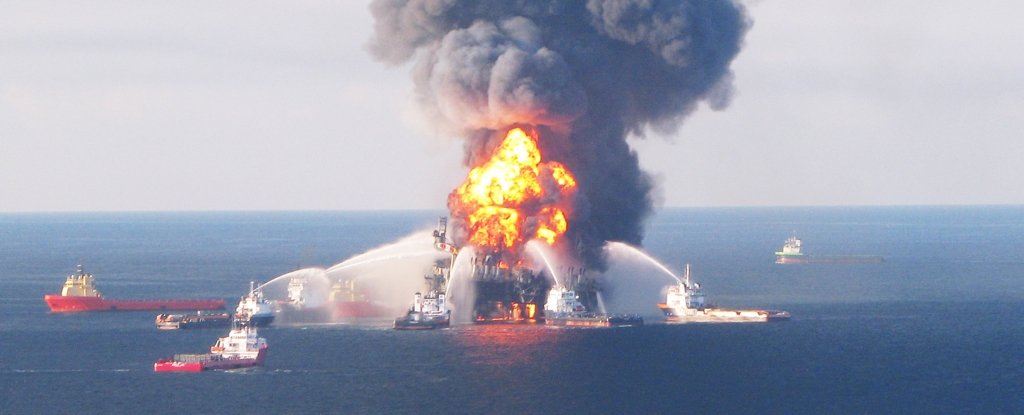Products You May Like
The Deepwater Horizon oil spill was not a short-lived catastrophe. Over 10 years after one of the largest environmental disasters in human history, a sticky oil residue still coats some marshland in the Gulf of Mexico, a new report reveals. Its impacts are still not fully understood.
In the months following BP’s 2010 Deepwater calamity, desperate attempts were made to clean up all the crude oil that had spilled into the environment.
Some oil was directly recovered. Some was burned, some was skimmed. Some was chemically dispersed, and large portions evaporated or dissipated.
But plenty stuck around.
Within months, hungry microbes and the beating sun had altered many of the chemicals found in the oil pollution. These crude oil compounds were essentially made anew. Their chemical and physical properties were altered, which could very well have impacted their toxicity.
Larger compounds were particularly resistant to weathering. Gradually, these chemicals grew into a sticky insoluble goop that came to coat the Gulf’s marshlands for years to come, the report explains. Much of it probably persists to this day.
“[A]s oil weathers, the residue becomes resistant to further rapid compositional changes, and this means that, if not removed by response personnel, residues can remain in environments for extended time, causing long-term disruptions of impacted areas,” the authors of the study write.
Oil residues from an oil spill way back in 1979, for instance, were found on the Yucatan peninsula in 2020, almost 40 years after the initial disaster.
Now shorelines along the northern Gulf have been similarly impacted by a sticky substance that resembles the composition of moderate to heavy crude oil.
Researchers suspect that after the Deepwater spill, crude oil that wasn’t cleaned up and didn’t evaporate gradually drifted back into the water column via the wind and waves. The tides would have then carried these chemicals to the shore or to deeper waters.
In the summer of 2011, a year after the spill, researchers found most of the crude oil compounds had been substantially altered by evaporation, dissolution, photochemical oxidations, and microbial degradation.
What that does to the residue’s actual toxicity is unclear. Only a small number of crude oil compounds have had their environmental effects analyzed by researchers to date.
“The important point about oil spills is that the oil’s compounds are a type of material that can be degraded by sunlight and marine bacteria (biodegradation), in contrast to other types of pollutants such as the chlorinated pesticides like DDT,” explains environmental scientist Edward Overton of Louisiana State University.
“Oil spills release lots of chemicals quickly and most damage from oil spills occurs fairly soon after the spill.”
But that doesn’t mean the damage stops there. Many of the stranded chemicals from the Deepwater oil spill lingered in marshlands until at least 2018.
By 2020, this highly insoluble coating was detected in marshes and deep-water sediments of the Gulf, albeit at very low levels. These locations are inaccessible to mechanical cleanup equipment, which is probably why the pollution persisted.
So what was their effect on wildlife for all those years?
Part of that toxic effect could be due to the way crude oil weathers over time. Some of the resulting components become more prone to reacting in animals, some like PAHs are known to accumulate in their tissues, and some are known carcinogens.
The truth is, we know surprisingly little about what happens to crude oil in the environment over long time spans, let alone the effect of those changes on animals or plants. But we are continuing to see negative impacts on wildlife.
In 2021, scientists announced that pollution from the Deepwater spill was still impacting marine life on the seafloor, causing very low reproduction rates for local animals such as fish and dolphins.
Meanwhile, the company responsible for this long-term damage is no worse off than if the spill had never happened, a recent study on penalties for industrial accidents concluded.
“The better we understand the chemicals and their chemical reactive properties as well as their physical properties, the better we will be able to mitigate oil spills and understand and detect environmental damages from oil spills,” says Overton.
“Hopefully, this paper will help expand our understanding of the types of chemicals that are found in oil and their ability to cause environmental damages.”
The study was published in Frontiers in Marine Science.
